1N4148 Small Signal Switching Diodes Symbol, Working Principle, Packages and Other Details
2024-07-12
2365
Catalog
Overview of 1N4148
The 1N4148 is a small, high-speed switching diode. It is renowned for its fast switching speed, making it particularly suitable for high-frequency signal circuits. You might wonder why exactly its speed is crucial. In applications such as computer boards, communication systems, and television circuits, the rapid switching helps manage the quick data flow efficiently. Furthermore, industrial control systems also benefit from its speed. Could the package type impact performance? This diode comes in a variety of packages, including DO35, LL34, SOT23, and SOD323. It offers high reliability and is cost-effective.

Typical Applications
In practical applications:
- Engineers and technicians often rely on the 1N4148 in high-frequency circuits where quick response times are essential.
- For example, in computer board designs, the diode’s fast switching capability supports efficient data processing.
- Similarly, the diode is critical in communication circuits for maintaining signal integrity.
Switching Characteristics
The 1N4148 can be typically used in switching applications up to approximately 100 MHz.
Its reverse recovery time does not exceed 4 ns.
How does a low reverse recovery time benefit a circuit, though? Essentially, it helps maintain the efficiency and integrity of the signal by minimizing lag.
Replacement Options
Replacement options include:
- 1N4148TR
- 1N4148WS
- 1N4448
- 1N914
- 1N914A
- 1N916A
These alternatives provide design and cost management flexibility. By evaluating these options, engineers can meet specific requirements or constraints without compromising performance, ensuring tailored solutions for diverse projects.
What are the characteristics of the 1N4148 diode?
The 1N4148 diode is known for several critical specifications:
- 100V reverse voltage,
- An average forward current of 150mA.
What does 100V reverse voltage mean in practical applications? This high reverse voltage ensures that the diode can withstand significant backward voltage without breaking down.
Advanced glass-passivation technology is employed in its construction, thereby providing exceptional reliability and stability. This technology safeguards the component and enhances its performance in various conditions. But how does glass-passivation technology affect diode stability? The insulating layer created through this technology minimizes leakage current and protects against environmental factors, enhancing longevity.
- Its junction capacitance and reverse recovery time are fine-tuned to meet the demands of most applications.
- The 1N4148 is renowned for fast switching speed, enabling efficient handling of high-frequency signals.
This speed significantly reduces signal distortion and attenuation. Very short reverse recovery time minimizes power loss during the switching process.
In real-world contexts, the utility of the 1N4148 diode becomes prominent in high-speed digital circuits and RF communication systems. Engineers frequently choose this diode for its rapid state-switching capabilities, which reduce latency and improve overall system speed. Is it surprising that this adaptability is highly sought after in modern electronics? Speed and efficiency are paramount in today's tech landscape.
Additionally, the 1N4148 is utilized in low-voltage, low-current applications such as digital logic circuits, where quick response times are crucial. This versatility makes it indispensable in various electronic scenarios.
Through decades of practical use, the 1N4148 diode has proven to be reliable and robust. Personal accounts from industry veterans often describe scenarios where its performance has been central to project success. This anecdotal evidence highlights a trust built not merely on specifications but on consistent real-world effectiveness.
From my viewpoint, the longevity and ongoing popularity of the 1N4148 diode reflect its essential role in electronics. Its blend of performance and dependability make it a mainstay in both academia and industry. It drives forward the possibilities within electronic design.
Ultimately, the 1N4148 diode exemplifies a combination of reliability and rapid response, establishing itself as an indispensable component in a broad range of applications.
1N4148 Diode Symbol, Package, and Pin Configuration

The symbol, package, and pin configuration of the 1N4148 diode are detailed as follows:
- Pin 1 (anode), where current enters.
- Pin 2 (cathode), where current exits.
Expanding on the fundamentals, the 1N4148 is a high-speed switching diode prevalently employed in various electronic circuits. But why is this particular diode chosen so frequently? Its practical applications and specific characteristics hold the key to its widespread use.
Interestingly, the anode (Pin 1) is marked by a triangle pointing towards a vertical line representing the cathode (Pin 2). This symbol plays a vital role in ensuring correct current flow during circuit assembly. Also, the 1N4148 diode is encased in a compact, sturdy DO-35 glass package. Why is this package design so prevalent? Its robust mechanical protection and efficient heat dissipation help maintain optimal performance under varying thermal conditions.
From a design angle, the 1N4148's fast switching capability, low forward voltage drop, and reliable performance make it favorable for signal processing applications. Engineers exploit these features to develop efficient rectifiers and clamping circuits. Moreover, its high switching speed is advantageous in high-frequency applications, such as RF circuits.
A nuanced aspect to consider is the diode’s reverse recovery time. In circuits demanding rapid switching, how can the 4ns reverse recovery time enhance performance? This short recovery period is significant for high-speed data transmission systems, minimizing delay and maintaining signal integrity, which are crucial in contemporary communication technology.
Proper handling during soldering is another aspect that cannot be overlooked. Excessive heat during the process can alter the diode's characteristics. Therefore, what mitigation techniques are typically employed? Practitioners often use heat sinks or regulate soldering temperature and duration to prevent thermal damage.
In conclusion, a thorough understanding of the 1N4148’s symbol, package, and pin configuration is fundamental for its effective deployment across various electronic circuits. Its blend of mechanical resilience and superior electronic properties cements its status in both consumer electronics and precision instrumentation.
How Does the 1N4148 Diode Work?
The 1N4148 is known for its fast recovery properties, operating based on the rectifying characteristics of the PN junction. But how does this rectification actually happen? When a forward voltage is applied, electrons migrate to the P-region, and holes move to the N-region, resulting in a current flow through the diode. Initially, a depletion region exists, preventing current flow under zero or reverse bias. However, when a reverse voltage is applied, this depletion region expands, further inhibiting current flow. If the reverse voltage surpasses a certain threshold, the PN junction undergoes breakdown. This causes a rapid increase in the electric field within the depletion zone, allowing electrons and holes to traverse the depletion region, creating a very low-resistance conductive path.
In practical electronics, the 1N4148 is cherished for its rapid switching capabilities. Why is this speed so crucial? Because it makes the diode ideal for high-speed applications, such as signal processing circuits, where quick response times can effectively manage transient signals. Engineers often select the 1N4148 for these scenarios due to its low forward voltage drop and high-speed switching, minimizing signal distortion and power loss.
Additionally, this diode is frequently employed in protector circuits to safeguard sensitive components against voltage spikes. In a typical over-voltage protection circuit, the 1N4148 quickly shunts excess voltage to ground, thereby protecting transistors and ICs from potential damage.
An intriguing facet of using such diodes is the troubleshooting process in complex circuits. Technicians often observe circuit behavior to identify a failed diode by measuring the voltage drop across the diode and comparing it to expected values. Does this process rely solely on technical knowledge? Not entirely—this is where practical experience and diagnostic skills, developed over years, come into play.
To summarize, the 1N4148 diode is a versatile component with applications in various fast-switching and protection scenarios. Its practical use highlights the essential role of hands-on experience and empirical knowledge in effectively utilizing electronic components.
What are the applications of the 1N4148 diode?
The 1N4148 diode is widely used in various applications, encompassing:
- Current regulation
- Pulse circuits
- Signal filtering/detection
- Digital logic circuits
- Half-wave and full-wave rectifiers
- General-purpose and high-speed switching
- Mixers and tuners
Current Regulation
One of the prominent uses of the 1N4148 diode can be found in current regulation. Do you know why this is so significant? It's because it maintains a stable current, ensuring efficient operation of circuit components. For instance, in power supplies, it ensures correct voltage levels, preventing potential component damage.
Pulse Circuits
In pulse circuits, the 1N4148 diode is noteworthy for its high-speed switching capabilities. Can it handle rapid changes in signal without compromising performance? Absolutely. Engineers frequently employ this diode in timing and synchronization circuits where precision is paramount, showcasing its reliability in critical systems.
Signal Filtering and Detection
Signal filtering and detection is another area where the 1N4148 excels. By removing noise and unwanted signals, it maintains the integrity of desired signals. This aspect is invaluable in communication systems, where clarity and accuracy are fundamental.
Digital Logic Circuits
In digital logic circuits, the 1N4148 diode offers needed insulation and enables sharp signal transitions. Why is this essential? It helps to preserve the logical integrity of signals, avoiding errors that might lead to malfunction or data corruption, often encountered in many digital devices.
Rectification (Half-Wave and Full-Wave)
Considering rectification, both half-wave and full-wave, the 1N4148 diode's robustness and efficiency make it a suitable candidate. Its role here includes converting AC to DC power smoothly and effectively, critical to many power supply systems.
General-Purpose and High-Speed Switching
The diode's application in general-purpose and high-speed switching underscores its versatility. What makes it particularly valuable? The rapid response time and consistency, making it ideal in circuits demanding quick and reliable responses.
Mixers and Tuners
In mixers and tuners, the 1N4148 diode aids in accurate frequency modulation and demodulation, ensuring precise signal tuning, which is vital in radio and broadcasting technology.
In summary, the 1N4148 diode serves as a versatile and reliable component in many modern electronic applications. Its capability to function efficiently across diverse scenarios highlights its role in upholding the performance and integrity of various electronic systems.
1N4148 Diode Technical Specifications
The 1N4148 is renowned in the world of silicon switching diodes for its swift response time and commendable reliability. It finds widespread use among engineers and hobbyists alike for tasks such as rectifying small signals, switching, and clipping. To grasp its full potential and applications, one must examine its technical parameters and their real-world implications.

Maximum Ratings:
- Repetitive Peak Reverse Voltage (V_RRM): 100V
- Continuous Reverse Voltage (V_R): 75V
- Forward Continuous Current (I_F): 300mA
- Non-Repetitive Peak Forward Surge Current (I_FSM): 450mA (8.3ms single half sine-wave)
- Reverse Recovery Time (t_rr): 4ns
Detailed Parameter Analysis and Practical Insights:
Repetitive Peak Reverse Voltage (V_RRM):
The 1N4148 can handle a repetitive peak reverse voltage of 100V. This attribute is particularly useful in circuits where high reverse voltages are a regular occurrence, such as in high-frequency pulse circuits. What practical implications does this have? In signal processing applications, for instance, engineers prefer the 1N4148 to mitigate voltage spikes, thereby preserving signal integrity.
Forward Voltage Drop (V_F):
At a forward current of 10mA, the forward voltage drop typically measures around 0.7V, maxing out at 1V. This low forward voltage drop translates to reduced power loss in low-voltage circuits. In real-world applications, is efficiency the primary concern? Yes, especially in battery-powered devices where every milliamp counts. For instance, the 1N4148 is a common choice in low-power mobile electronics to ensure prolonged battery life and optimal performance.
Reverse Recovery Time (t_rr):
The 1N4148 boasts a reverse recovery time of 4ns — a feature that sets it apart in high-speed switching applications. Why is this significant? In telecommunications and data processing circuits, rapid switching is critical for maintaining accurate signal processing and data integrity. Engineers frequently utilize this attribute in timing circuits, frequency mixers, and fast switching regulators, highlighting the diode's vital role in these applications.
Power Dissipation (P_D):
Capable of handling a power dissipation of 500mW, the 1N4148 operates efficiently across diverse environments without overheating. However, what practical measures can ensure this? Thermal management becomes essential, often involving the use of heat sinks or optimized PCB layouts to maintain safe temperature ranges. This consideration not only enhances the diode's longevity but also its reliability.
Forward Surge Current (I_FSM):
The diode's ability to endure a non-repetitive peak forward surge current of 450mA makes it apt for circuits with transient spikes, such as switched-mode power supplies (SMPS). How does this impact design choices? Engineers often include the 1N4148 in surge protection circuits to shield sensitive components from unexpected current surges, thereby safeguarding the overall system.
Conclusion:
With its technical parameters, the 1N4148 diode proves to be versatile and reliable across a spectrum of applications. Its fast response time, low forward voltage drop, and high reverse voltage tolerance make it a critical component in modern electronics. Drawing from firsthand experience, utilizing the 1N4148 yields dependable performance in both hobbyist and professional designs, particularly in high-frequency and low-power applications. Its utility and robust performance highlight its continued relevance in the electronic component market.
1N4148 Switch Diode's Common Packages
The 1N4148 switch diode is noted for its availability in several standard packages: DO-35, LL-34, SOD-323, and SOT-23. Each package caters to different application requirements, offering distinct advantages in various electronic circuit designs.
The DO-35 package, featuring axial leads, is suitable for through-hole mounting. It is frequently used in prototyping and experimental setups for its easy installation and mechanical robustness. Technicians and hobbyists value the DO-35 package for its reliability in breadboard applications and resistance to physical stress compared to surface-mount alternatives.
The LL-34 package offers cylindrical surface-mount glass encapsulation, combining robust mechanical protection with space-saving attributes. It is often employed in circuits where component density is critical without compromising durability. For example, LL-34 is commonly used in automotive electronics where resilience under harsh conditions is paramount.
The SOD-323 package, with its two-lead plastic surface mounting, is designed for high-volume production. It balances compact size with automated assembly convenience, fitting modern circuit boards that require speed and cost-efficiency. The package's low profile is advantageous in small devices like smartphones and wearables where PCB space is limited.
The SOT-23 package, an ultra-thin surface mount option, is perfect for low-power circuits. Its design facilitates significant PCB space savings, essential for miniaturizing modern electronics. Engineers frequently opt for the SOT-23 package in power management circuits within portable devices, driven by the need for space conservation and power efficiency. Through iterative design improvements, SOT-23 has shown reliability and consistency, becoming a go-to choice in advanced electronic applications.
In summary, the 1N4148 switch diode's package selection depends on the specific application requirements. Each package balances size, performance, and production ease, meeting various needs in electronic design and manufacturing. Diverse industry experiences underscore the versatility and necessity of these packages in creating efficient and reliable electronic systems.
How to Determine the Polarity of a 1N4148 Diode
The 1N4148 diode, a widely used switching diode, typically has one end where the lead is shorter. This end indicates the negative terminal (cathode), while the longer lead often marked with a printed band represents the positive terminal (anode).
1) Identifying the polarity is crucial for correct circuit integration. One practical way to determine the polarity is to utilize the diode test function of a multimeter, which reveals the conductivity state and thus helps verify the diode's terminals.
2) Physical examination of the diode is often a preliminary step in practical applications and based on accumulated engineering experience. Checking the printed band on the cathode side can quickly indicate polarity.
- However, this method may not always be reliable due to potential marking inconsistencies in some manufacturing processes.
- Therefore, using a multimeter is recommended to double-check.
3) To effectively use a multimeter for this purpose, follow these steps:
- Set the multimeter to the diode test mode.
- Connect the multimeter leads to the diode's terminals.
- A reading will appear if the anode is connected to the positive lead and the cathode to the negative lead.
This step confirms the correct polarity, as a diode only permits current flow in one direction. Curiously, have you ever pondered why a diode's functionality hinges on this one-way current flow? The answer lies in its semiconductor properties, which fundamentally shape the behavior of current in electronic circuits.
4) My core viewpoint on this topic integrates the importance of understanding both theoretical knowledge and practical application. Engineers often find that combining visual inspection with precise multimeter measurements ensures accurate identification of diode polarity. This is key for the reliability of electronic circuits, minimizing errors and enhancing overall efficiency in electronic design and troubleshooting activities.
5) By integrating these practical tips and experiences, one can more accurately and efficiently determine the polarity of a 1N4148 diode, thus ensuring seamless and effective circuit integration.
How to Test the Quality of the 1N4148 Diode?
To accurately assess the quality of a 1N4148 diode, several testing methodologies can be employed.
Observing the thermal effect is crucial; an overheated diode may indicate excess current or poor dissipation capabilities, which could compromise its functionality. Why does an overheated diode signal a problem? Simply put, it points to inefficient current handling or heat dissipation mechanisms.
Practical experience has shown that using a transistor tester or a multimeter is highly effective for diagnostic purposes.
- When utilizing a multimeter, set the device to the diode testing mode. Position the probes across the diode and measure the forward voltage drop, which typically should be around 0.6 to 0.7 volts for a 1N4148.
- Any significant deviation from this range may suggest potential issues such as deterioration or defects.
In field applications, ensure that the power supply is disconnected before attempting any measurement.
- Selecting the appropriate measurement technique can yield more reliable results.
- For example, confirming the diode’s reverse leakage current, which should be negligible, is equally critical.
- A higher than expected leakage current could imply a breakdown of the diode's integrity. Could the discovery of a high leakage current be indicative of a latent defect? Indeed, it often reveals weaknesses in the diode's construction or material composition.
From my perspective, the meticulous evaluation of discrete components like the 1N4148 allows for better predictive maintenance of electronic circuits.
- This proactive approach maximizes circuit reliability and performance.
- Testing under different environmental conditions can also unveil hidden flaws that might not be apparent under standard testing scenarios.
In summary, employing thorough testing methods and leveraging practical insights can significantly enhance the understanding and reliability of the 1N4148 diode in various applications.
Frequently Asked Questions [FAQ]
1. What is the purpose of the 1N4148 diode?
The 1N4148 diode serves multiple functions in various circuits, such as voltage clamping, signal rectification, signal mixing, small signal amplification, oscillators, and voltage regulation.
Voltage clamping protects sensitive components by limiting voltage spikes in circuits. It essentially functions as a safeguard, but why is voltage clamping so effective? Because it prevents transient voltages from causing damage.
Signal rectification is a process that converts alternating current (AC) to direct current (DC). In power supplies, this conversion is non-negotiable.
In small signal amplification and oscillators, diodes like the 1N4148 stabilize signal levels, ensuring consistent performance, even in high-frequency applications. The real question here is, how does stabilization improve circuit performance? It minimizes distortions and maintains signal integrity.
2. How can I identify a 1N4148 diode?
The 1N4148 diode stands out due to its orange and black coloring, with a black stripe indicating the cathode side. By contrast, the 1N4001 diode is generally black and gray, marked with a gray stripe on the cathode.
In practical scenarios, technicians often use coding systems to avoid confusion. This meticulous practice ensures the correct component is selected, significantly reducing the risk of failures in electronic designs.
3. Is the 1N4148 diode a Zener diode?
The 1N4148 is not a Zener diode; it is a general-purpose silicon diode.
Zener diodes are unique in that they allow current to flow in the reverse direction once a specific reverse voltage is surpassed. On the other hand, the 1N4148 is optimized for rapid switching in the forward direction. This distinction is particularly critical in applications needing precise voltage regulation or rapid signal processing.
4. What is the difference between the 1N4007 and 1N4148 diodes?
The primary difference between the 1N4007 and the 1N4148 diodes lies in their specifications:
- The 1N4148 is a 100V, 150mA switching diode with a ns-level reverse recovery time.
- The 1N4007 is a 1000V, 1A rectifier diode with a µs-level reverse recovery time.
This difference in specifications often dictates their use in different scenarios. For instance, the 1N4148’s rapid recovery time makes it suitable for high-speed circuits. Conversely, the 1N4007’s higher voltage and current capacities make it preferable for power rectification in low-frequency environments. An incorrect choice here could result in operational inefficiencies or even circuit damage.
5. Can I use the 1N4001 instead of the 1N4148?
While it is possible to use the 1N4001 instead of the 1N4148, it is generally more suitable for high-current applications since it is a 1A rectifier commonly used in small relay circuits.
That said, substituting diodes should be approached with caution. For instance, using a 1N4001 in place of a 1N4148 in a high-speed switching circuit might not yield optimal results due to the slower recovery time of the 1N4001. Real-world experience shows that ensuring compatibility in terms of speed and current capacity is crucial for maintaining circuit reliability and performance.
 ABOUT US
Customer satisfaction every time. Mutual trust and common interests.
ABOUT US
Customer satisfaction every time. Mutual trust and common interests.
function test. The highest cost-effective products and the best service is our eternal commitment.
Hot Article
- Are CR2032 and CR2016 Interchangeable
- MOSFET: Definition, Working Principle and Selection
- Relay Installation and Testing, Interpretation of Relay Wiring Diagrams
- CR2016 vs. CR2032 What’s the difference
- NPN vs. PNP: What's the Difference?
- esp32 vs stm32: which microcontroller is better for you?
- LM358 Dual Operational Amplifier Comprehensive Guide: Pinouts, Circuit Diagrams, Equivalents, Useful Examples
- CR2032 VS DL2032 VS CR2025 Comparison Guide
- Understanding the Differences ESP32 and ESP32-S3 Technical and Performance Analysis
- Detailed Analysis of RC Series Circuit
 L293D vs L298N: The Difference Between L293D and L298N
L293D vs L298N: The Difference Between L293D and L298N
2024-07-12
 LM358 Dual Operational Amplifier Symbol, Features, LM393 vs LM358 and Applications
LM358 Dual Operational Amplifier Symbol, Features, LM393 vs LM358 and Applications
2024-07-12
Hot Part Number
 GRM32AR61C106KAB7L
GRM32AR61C106KAB7L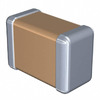 C3216CH2W682J115AA
C3216CH2W682J115AA EMK107ABJ225MAHT
EMK107ABJ225MAHT CC0805JRX7R9BB822
CC0805JRX7R9BB822 06033C223MAT4A
06033C223MAT4A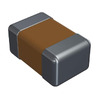 0805YA390JAT2A
0805YA390JAT2A 06033C561JAT2A
06033C561JAT2A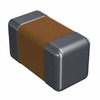 04023A270GAT2A
04023A270GAT2A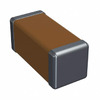 1808HC101MAT1A
1808HC101MAT1A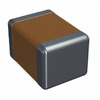 1812JA470JAT1A
1812JA470JAT1A
- CGA4F4X7T2W103K085AA
- TPSD227K006S0100
- T495D226K020ZTE200
- 1-175218-2
- EPF10K30RI208-4N
- PIC24F08KL401-I/SS
- MIC2124YMM
- RT9059GSP
- CY8C20334-12LQXI
- M30291FCHP#U5A
- CPC7593BA
- IS62C1024AL-35TI
- RT0402BRE07249RL
- V375B2C80AL
- VI-NUL-EM-CC
- ADG452BR
- T495X476M020ATE130
- TPS26625DRCT
- S9S08DZ32F2CLC
- XCV50E-6FG256C
- AD5660CRMZ-2
- TUSB3200ACPAH
- BCM3116KPF
- CMF2520F-601-2P-T
- LH28F160BJB-TTLZU
- LM20323AMH
- LTF5022T-3R3N2R5
- LV5115NV-TLM-E
- MC74HC541AFL1
- PM8379-BI
- PTFB183408SV
- S29GL512S10DHI02
- S908QY4ACDWE
- SD500R36PTC
- 29LV400BC-9D
- TC3084-TQ64-EPG
- VL82C106FC4
- M88CS6001-V16-A8
- STPSC20065DI